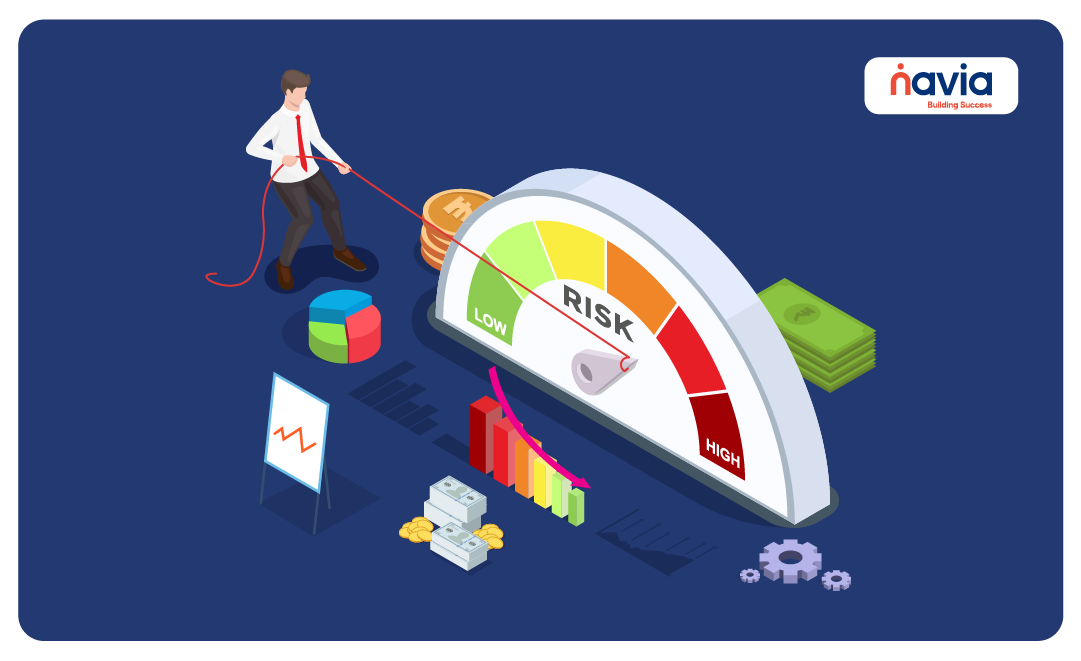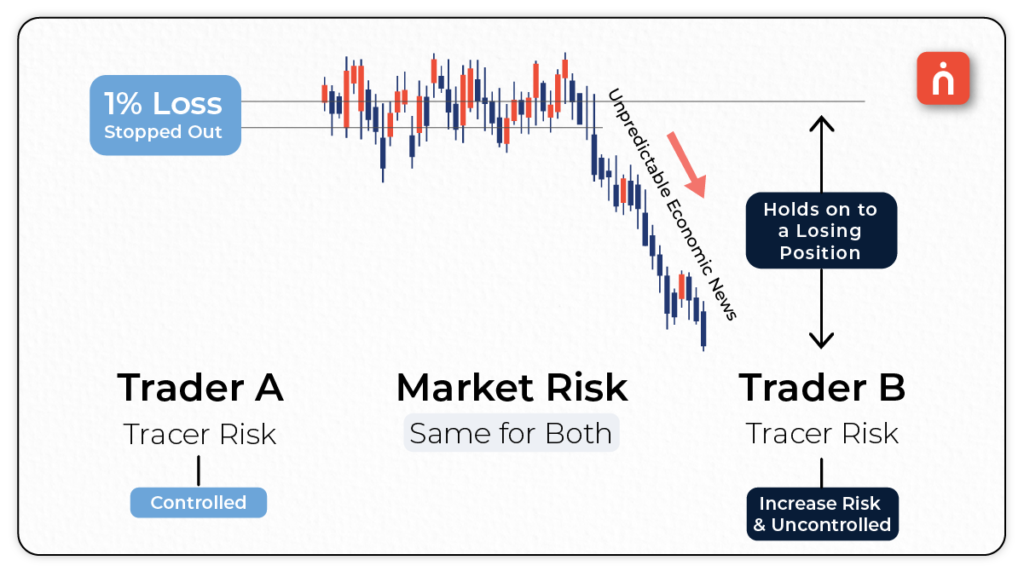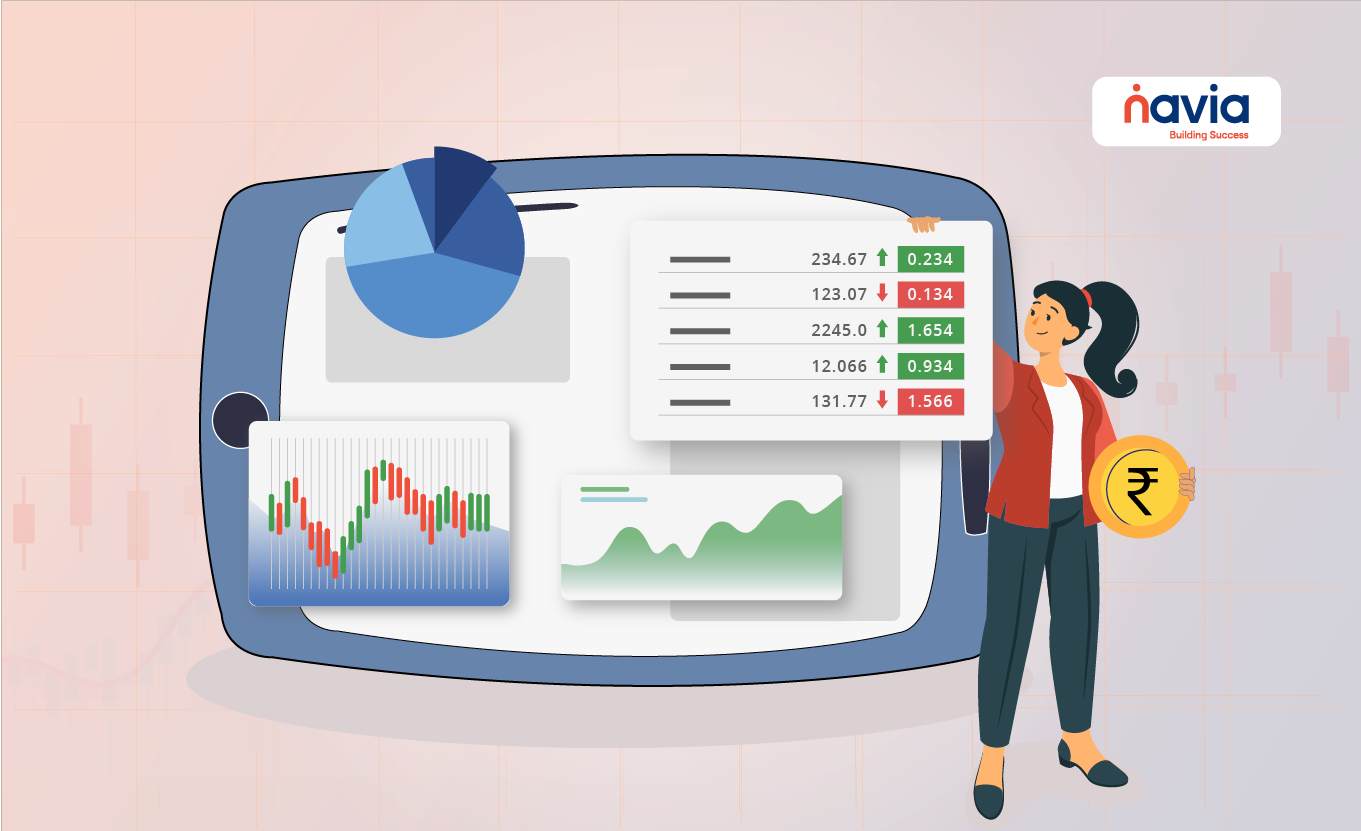Risk Management Strategies for Day Traders

Table of Contents
Day trading, also known as intraday trading, is the practice of buying and selling Stocks within the span of a single trading day. The potential for high profits exists in this fast-paced trading style, but so do significant risks. For those new to intraday trading, it’s essential to understand and implement effective risk management strategies to protect your capital and enhance profitability. Day traders can confidently navigate volatile markets using the right techniques.
In this blog, we will explore risk management strategies specifically designed for intraday trading, offering valuable insights for both novice and experienced traders. By implementing these strategies, you can reduce potential losses and improve your trading performance.
The Crucial Role of Risk Management:
Risk management stands as the cornerstone of any successful trading endeavor. Its importance cannot be overstated, serving as the first line of defense against potential losses and market volatility. Without proper risk management, traders risk finding themselves in precarious situations, akin to attempting to patch up a leaky faucet that only worsens with time until it ultimately bursts. Failure to address risk management leaves traders vulnerable to the unforgiving nature of the market, where any weakness will be ruthlessly exploited. Remember, while market risk remains beyond one’s control, trader risk must be meticulously managed.

Understanding the Landscape of Trading Risks:
In the realm of trading, risks manifest in two distinct forms, each demanding careful consideration and management.
🔹 Market Risk
encompasses the inherent unpredictability of the market itself. It encompasses fluctuations affecting individual stocks, entire sectors, or the broader market as a whole.
🔹 Trader Risk
on the other hand, lies squarely within the purview of the trader. It emerges from the decisions made in planning, executing, and reacting to market movements. Unlike market risk, trader risk is controllable, offering traders the agency to dictate their responses to market dynamics.
It’s crucial to discern between these two categories of risk as they dictate different levels of control. While market risk remains immutable, trader risk is subject to the choices and actions of the trader.
Consider this scenario: imagine the market suddenly plunges due to unforeseen economic news (market risk). Now, one trader decides to cut their losses at a 1% loss, while another trader stubbornly holds onto their losing position. Although both traders faced the same market risk, the traders who opted for a more liberal approach to risk management ended up increasing their own trader risk.
🔹 Set a Risk-Reward Ratio
One of the foundational principles of risk management in intraday trading is establishing a risk-reward ratio. That involves determining how much risk you are prepared to take on each trade relative to the potential reward. An accepted ratio is 1:3, where the potential reward is three times the amount of risk.
This strategy ensures that the overall returns can still be positive even if only a portion of trades is successful. By setting a clear risk-reward ratio, traders can maintain discipline and avoid making impulsive decisions based on short-term market fluctuations.
🔹 Use Stop-Loss Orders
Implementing stop-loss orders is a crucial technique to limit potential losses in intraday trading. A stop-loss order is a predetermined price level at which a trade will automatically be closed to prevent further losses.
This tool helps traders manage the risk by ensuring that losses on any single trade do not exceed a set threshold. For beginners, placing stop-loss orders can provide peace of mind and help them stick to their trading plan without letting emotions take over.
🔹 Diversify Your Trades
Diversification is another effective risk management strategy. Instead of putting all your capital into a single trade, spread it across multiple trades in different assets or sectors. This approach reduces the impact of a poor-performing trade on your overall portfolio.
By diversifying, traders can mitigate the risk associated with any single asset and increase their chances of achieving more stable returns. This technique is particularly beneficial for newcomers to intraday trading, as it helps to manage the inherent market volatility.
🔹 Limit Leverage Usage
While leverage can amplify profits, it can also significantly increase losses. Using high leverage in intraday trading can be tempting, but it is crucial to use it cautiously.
Beginners should start with lower leverage ratios to better understand market dynamics and avoid substantial losses, thus managing risk effectively. As traders gain experience and confidence, they can gradually increase their leverage while still attaching to their risk management strategies.
🔹 Continuous Monitoring and Adjustment
The stock market is constantly changing, and so should your trading strategies. Constant monitoring of trades and adjusting your risk management strategies in response to market conditions is essential.
That might include tightening stop-loss orders, re-evaluating the risk-reward ratio, or revising position sizes based on market volatility. For beginners, staying updated with market news and trends is crucial for making informed decisions and refining their intraday trading techniques.

Conclusion
Effective risk management is the foundation of successful intraday trading. By setting a risk-reward ratio, using stop-loss orders, diversifying trades, limiting leverage usage, and continuously monitoring and adjusting strategies, traders can protect their capital and enhance their trading performance.
Mastering these intraday trading tips and techniques can lead to a profitable trading journey, especially for beginners. Remember, trading with discipline and a well-thought-out risk management plan is essential to navigating the unpredictable waters of intraday trading.
As you develop your skills and gain more experience, these strategies will help you stay resilient and achieve long-term success in the market. To explore more about effective intraday trading strategies and tips, visit Navia Markets Limited and start your journey towards successful trading today.
We’d Love to Hear from you-
DISCLAIMER: Investments in the securities market are subject to market risks, read all the related documents carefully before investing. The securities quoted are exemplary and are not recommendatory. Brokerage will not exceed the SEBI prescribed limit.
Follow us on:
Expert Insights on Trading, Investments, and Market Trends





